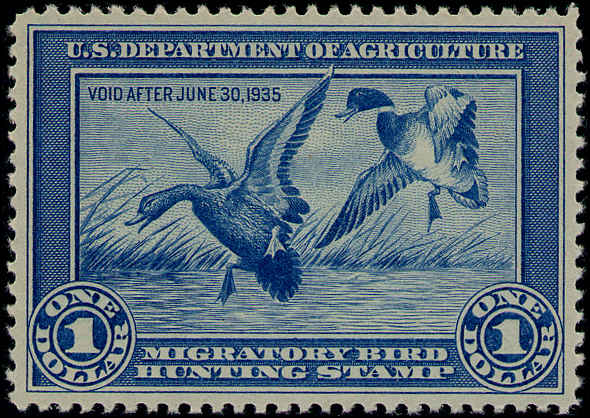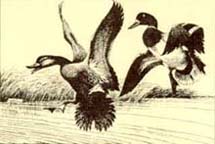

Back to RW1 Back to the Federal Index Home
A LITTLE HISTORY ON THE 1ST (1934-35) DUCK STAMP ARTIST


Marc Warner Darling, a Congregational minister, liked to take his son, Jay, hunting and fishing to give him an appreciation of the outdoors. His lessons were constantly hampered, however, by the fact that the boy was continually sketching. Little did he know how well the combination would work out. His son grew up to become a great conservationist, as well as a nationally recognized cartoonist.
Jay N. Darling was born on October 21, 1876. His middle name was Norwood after Norwood, Michigan, his birthplace. When he was young his family gave him the nickname "Ding", and it stuck. For the rest of his life he was known as "Ding" Darling to those who knew him and admired his work.
Jay Darling received his early schooling in a succession of Midwestern cities. He went to grade school in Elkhart, Indiana; high school in Sioux City, Iowa; and in 1894-95, attended Yankton College in Yankton, South Dakota. He later transferred to Beloit College in Beloit, Wisconsin where he earned his Ph.B. degree in 1900.
Mr. Darling worked as a reporter with the Sioux City Tribune for a year, and then went to the Sioux City Journal, where he began cartooning. He married Genevieve Pendleton, the daughter of a Sioux City judge on October 31, 1906. While he was on his honeymoon, Mr. Darling received a wire offering him a job with the Des Moines Register and Tribune. He accepted the offer and stayed with the paper from then until his retirement in 1949.
Beginning in 1917, his cartoons were syndicated to 130 daily newspapers by the old New York Tribune. His drawings were compiled and published in a book every two years from 1908 to 1920. He wrote and illustrated two other books as well.
He let his cartooning slide in 1934 and 1935 to go to Washington as Chief of the Biological Survey. There, for his work on behalf of our migratory birds, he became known as "the best friend ducks ever had." When the Migratory Bird Hunting Stamp Act was passed in March, 1934, Mr. Darling designed the first stamp himself. The money from the sale of the Duck Stamps was used for the purchase and development of waterfowl refuges.
During and after his 48 years as a cartoonist and conservationist, Mr. Darling was showered with awards in both fields. His honors included two Pulitzer Prizes for journalism, two honorary doctorates, and innumerable medals and awards. Two lakes were names for him: Lake Darling in an Iowa state park; and Lake Jay Darling, a waterfowl nesting area in Saskatchewan, Canada.
Mr. Darling died of a heart ailment February 12, 1962 in Iowa Methodist Hospital at the age of 85.
---------------THE ART---------------
Mallards Dropping In was painted with brush and India ink on illustration board 10"x14". The print was a copperplate etching printed in black ink on white paper. The total number of prints made is unknown, probably an edition of 300. All prints were signed in pencil, either JN or "Ding" Darling. Only one edition is known. The image size of the print in 5 3/4"x 8 1/2"
---------------THE STAMP---------------
Mallards...Engraved by the Federal Bureau of Engraving from the original artwork. Printed in blue ink. The stamp sold for one dollar. Postal records show 635,001 stamps sold. First day of sale, August 14, 1934.
Most of the information contained above is from the book Federal Duck Stamp Story, Fifty Years of Excellence, by Laurence F. Jonson; Alexander & Co. It is used here with permission from the author. For more information on this book, please click here.